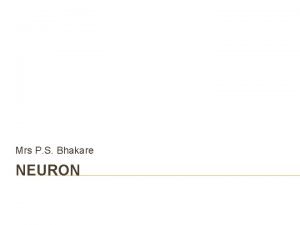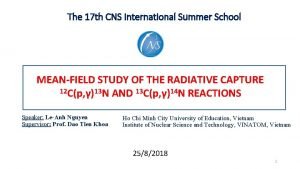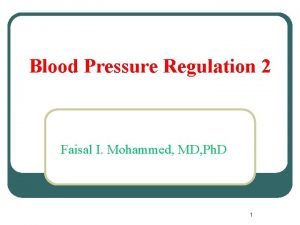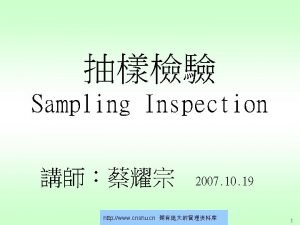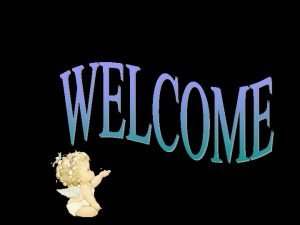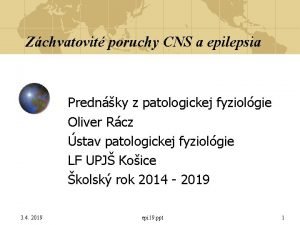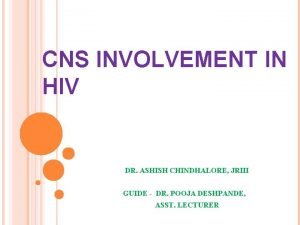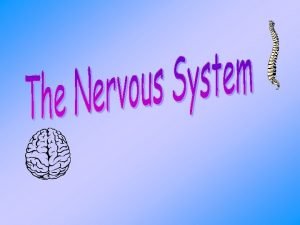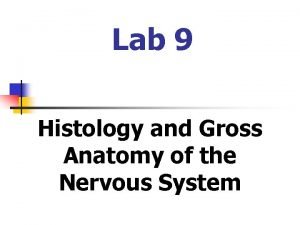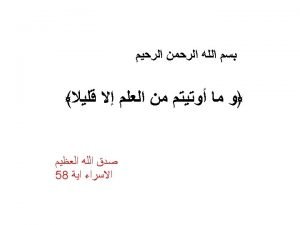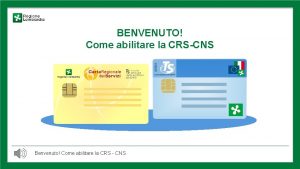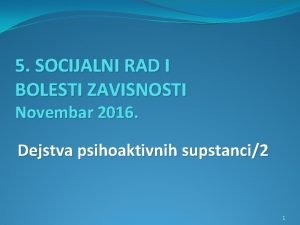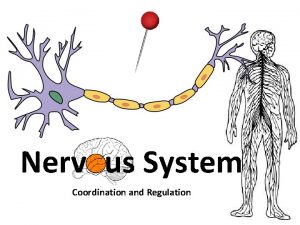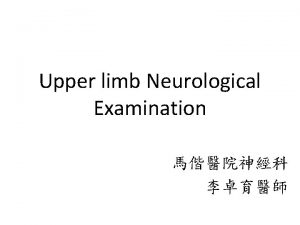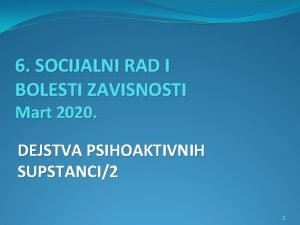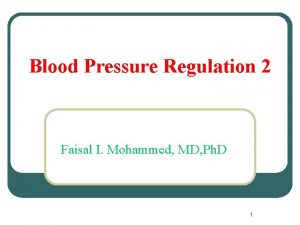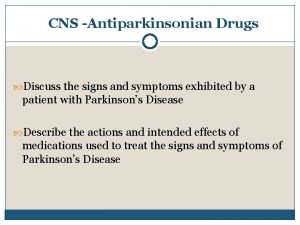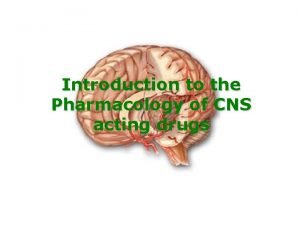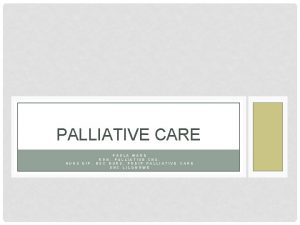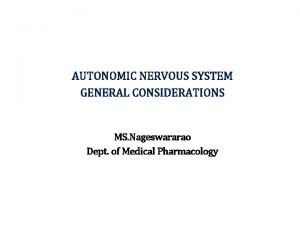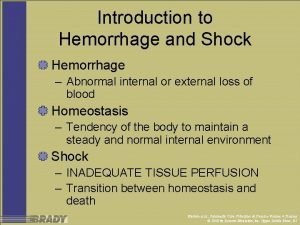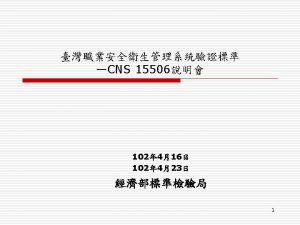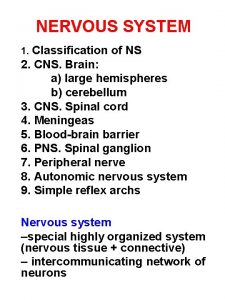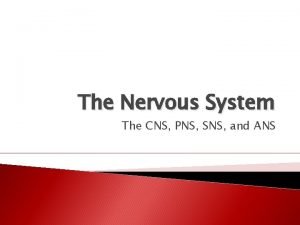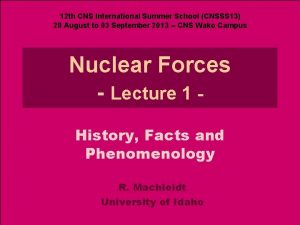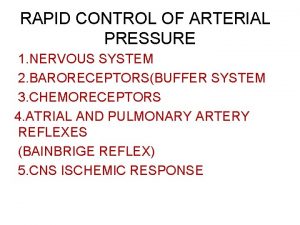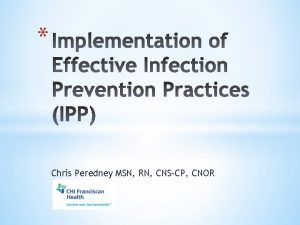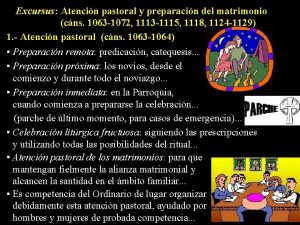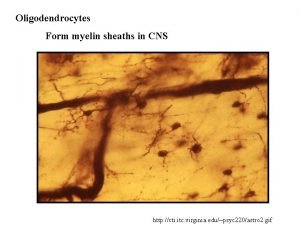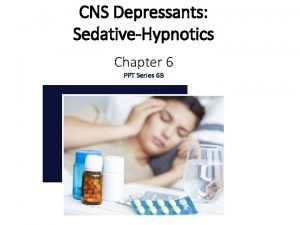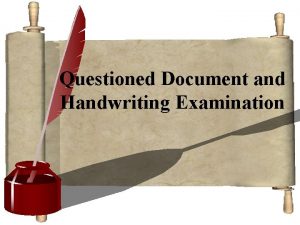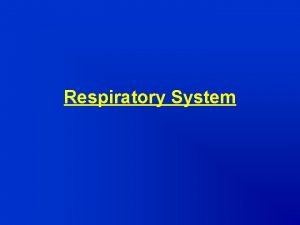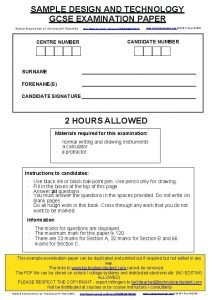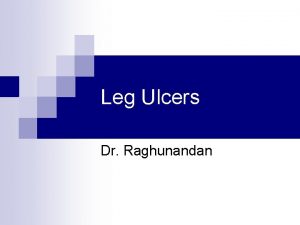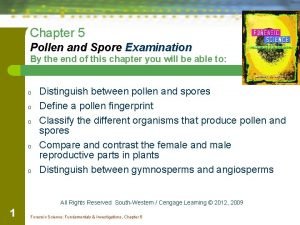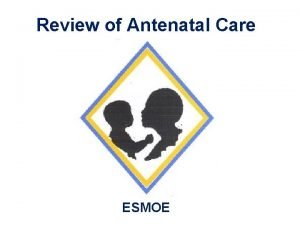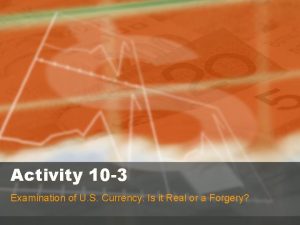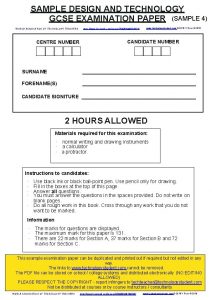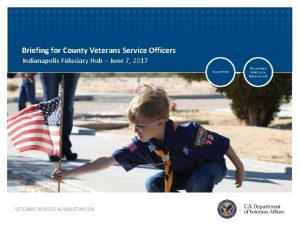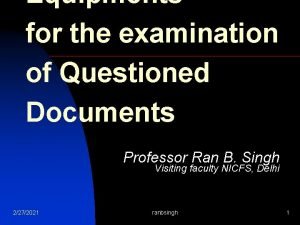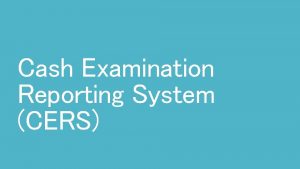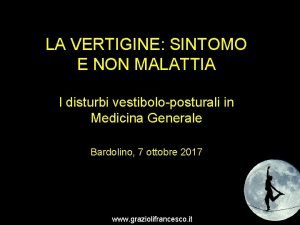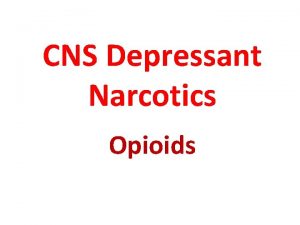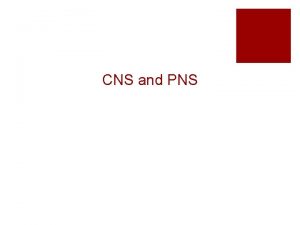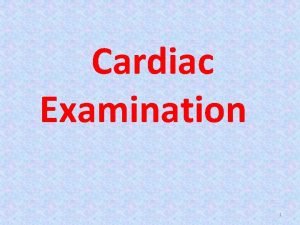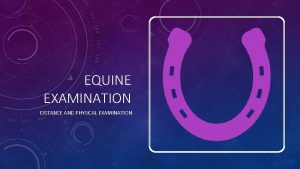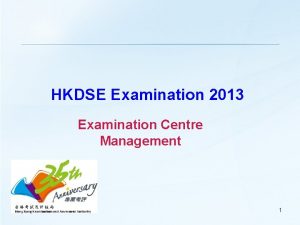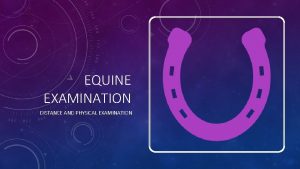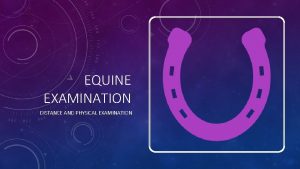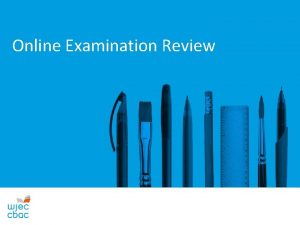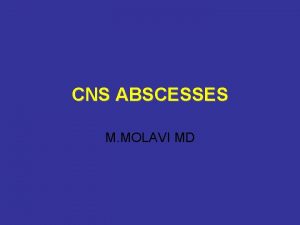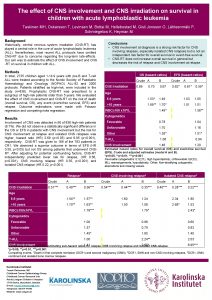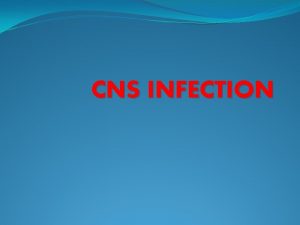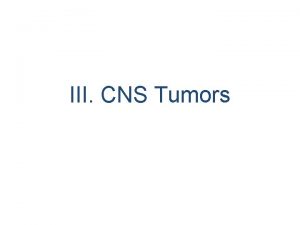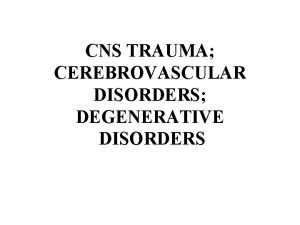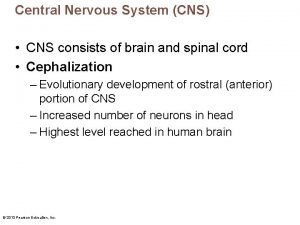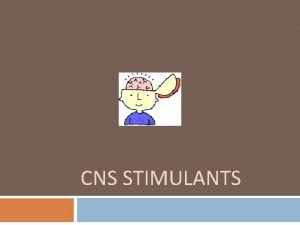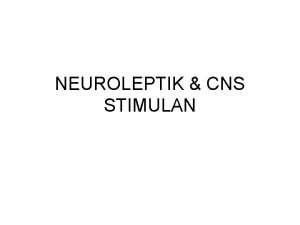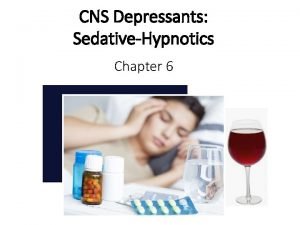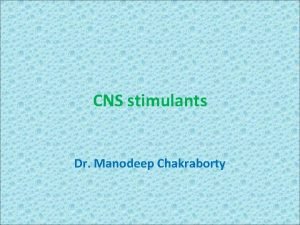CNS Examination C N S Symptoms 1 Symptoms

















































- Slides: 49

CNS Examination

C N S Symptoms 1 -Symptoms of increased ICT (hedeache, vomiting and blurring of vision) 2 -Symptoms of paroxysmal disorder (convlusion, syncope and vertigo) 3 - Symptoms of cranial nerves affection 4 -Symptoms of motor system affection 5 -Symptoms of sensory system affection 6 -Symptoms of sphincteric troubles 7 -Symptoms of A N S affection

Aspects of Examination 1 -Mental function 2 -Speech 3 -Cranial nerves 4 -Motor system 5 -Reflexes 6 -Sensory system 7 -Coordination 8 -Back and Spine 9 -Neck 10 -Gait

Examinationof Mental function 1 -State of Consciousness 2 -Orientation for place , time and persons 3 -Intelligence 4 -Behaviour 5 -Handedness

Examination of Speech 1 -Aphasia—Inability to formulate speech 2 -Dysarthria—Difficulty to articulate speech • Staccato speech • Slurred speech • Monotonous speech

Examination of Cranial Nerves • 3 rd & 4 th cranial nerves are located in the mid brain • 5 th , 6 th , 7 th cranial nerves are located in the pons • 9 th , 10 th , 11 th & 12 th cranial nerves are located in the medulla oblongata

Olfactory nerve • Non irritant substance • Each nostril is tested separately with both eyes closed • Anosmia—loss of sense of smell

Optic nerve • 1 -Acuity of vision—Snellens chart, counting fingers and light perception • 2 -Field of vision • 3 -Ophthalmoscopic examination

Opthalmoscopy: young child Return to examples Photo credit: Tom Shulz 9

CN III, IV, VI: Oculomotor, Trochlear, Abducent 1 -Ptosis (Partial or Complete) 2 - pupil • Light reflex (RRR) • Convergence & accomodation reflex 3 - Extra ocular movement 4 -Nystagmus

Light reflex • Look at pupils: shape, relative size, • Shine light in from the side to look for pupil's light reaction. Assess both direct and consensual responses.

The pupils

Eye movements Return to examples Photo credit: Tom Shulz 13

Squint 14

Trigeminal nerve 1 -Motor(muscles of mastication) patient opens mouth, clenches teeth Palpate temporal, masseter muscles 2 -Sensory • Ophthalmaic • Maxillary • Mandibular • 3 -Reflexs Corneal reflex

V Trigeminal nerve examination Return to examples 16 Photo credit: Tom Solomon

• 1 -Corneal reflex(A 5 -E 7): (patient looks up and away. ) • Touch cotton wool to other side. • Look for blink in both eyes. • Repeat other side • 2 -Jaw reflex

V Trigeminal nerve- jaw jerk normal(A 5 -E 5) Return to examples 18 Photo credit: Tom Solomon

Facial nerve (VII) 1 -Motor (muscles of expression of the face) • Upper part (Frontalis and Orbicularis oculi) • Lower part(Orbicularis oris, buccinator and retractor anguli) • UMNL--LMNL 2 -Sensory • Chorda Tympani(taste sensation from anterior two- third of tongue) 3 -Rflex ---Glabellar reflex

CN VII : Facial


Cochleo-Vestibular nerve 1 -Cochlear part • Rinnes test • Weber tes 2 -Vestibular part • Caloric test

VIII nerve examination: Hearing Return to examples 23

Glossopharyngeal and Vagus nerves • Platal reflex (A 5 -E 10) Stimulation of soft palate--elevation • Pharyngeal reflex(A 9 -E 10) Stimulation of pharynx---gag reflex

CN XI: Accessory • Inspection From behind, examine for trapezius atrophy, asymmetry. • Patient elevate shoulders against resistance (trapezius). • Patient turns head against resistance(sternomastiod muscle)

CN XII: Hypoglossal nerve Inspect tongue in mouth for wasting, fasciculations. Protrude tongue: unilateral to affected side. Abnormal movment deviates


Motor system • • don’t forget to compare both limbs Inspection Palpation ( muscle tone + tenderness ) Muscle power Reflexes

Inspection(state of the muscles) Inspect for muscle wasting ( proximal & Distal ) – scars – deformity – fasciculation – skin pigmentation – muscle tenderness

Muscle Tone 1 -Passive flexion and extension of all joints 2 -Shaking method for wrist and ankle 3 -Gower method • Tone(normal-hypo or hypertonia) • Hypertonia(spasticity or rigidity)

Increased leg tone Return to examples 31

Muscle power • The muscles tested against resistance • Upper limbs , lower limbs and abdominal muscles • Grades of muscle power 0 -no movement at all 1 -Trace of contraction or flickering 2 -Movement with gravity 3 -Movement against gravity 4 -Movement against resistance 5 -Full strength of the muscles

Muscle Power • Power by active movement at the shoulder , elbow , wrists and fingers.

Power upper limbs: normal 34

Reflexes (deep reflexes) • Upper limb Biceps ( C 5, C 6 ) – Triceps ( C 7, C 8 ) – Brachioradialis ( C 5, C 6 )

Reflexes: Upper limb Right and left abnormal (brisk) Return to examples 36

Reflexes • Lower limb Knee jerk ( L 3, L 4 ) – Ankle jerk (S 1, S 2 )

Clonus 1 -Ankle clonus 2 -Wirst clonus 3 -Patellar clonus

Clonus (abnormal) Return to examples 39

Superficial reflexes 1 -Abdominal reflex (T 6 -T 12) 2 -Cremasteric reflex (L 1) 3 -Gluteal reflex (L 4, 5) 4 -Anal reflex (S 3, 4, 5) 5 -Plantar reflex (S 1, 2)

Abdominal reflexes normal Return to examples 41

Plantar reflex normal Return to examples 42

Sensory System A-Superficial sensation • (pain, temperature, touch) B-Deep sensation • (position, movement , vibration) C-Cortical sensation 1 -Tactile localisation 2 -Two-pionts discrimination 3 -Stereognosis 4 -Graphosthesia

Examination of Coordination Upper limb 1 -Finger to nose test 2 -Finger to finger test 3 -Finger to finger doctor test 4 -Rebound test 5 -Buttoning and unbuttoning Lower limb 1 -Heel to knee test 2 -Walking test 2 -Romberg test

Cerebellar tests: finger-nose test normal Return to examples Photo credit: Tom Shulz 45

Examination of Back and Spine • Tenderness • Swelling • Deformity • Hair tuft Examination of neck • Sign of meningeal irritation(neck stiffnes)

Neck stiffness: normal Return to examples 47

Examination of Gait • • • 1 -Circumduction 2 -Scissoring 3 -High steppage 4 -Waddling 5 -Stamping (5 -Drunken(Zigzag

 Sore breasts before period
Sore breasts before period Histology of nervous tissue ppt
Histology of nervous tissue ppt Soma cns
Soma cns Cns summer school
Cns summer school Atrail
Atrail Cns2779-1
Cns2779-1 Cns depressants classification
Cns depressants classification Soma cns
Soma cns Central nervous
Central nervous Cns poruchy
Cns poruchy Cns
Cns Composition of cns
Composition of cns Neuron type
Neuron type Sensory system diagram
Sensory system diagram Www.lispa.it cns
Www.lispa.it cns Naas cns
Naas cns Depresori cns
Depresori cns Cns
Cns Mrc scale
Mrc scale Depresori cns
Depresori cns Cns ischemic response
Cns ischemic response Cns
Cns Cns
Cns Cns ward
Cns ward Ans and cns difference
Ans and cns difference Haemorrhage
Haemorrhage Cns 15506
Cns 15506 Classification of ns
Classification of ns Cns and sns
Cns and sns Cns international school
Cns international school Mean bp formula
Mean bp formula Cnscp
Cnscp Cns educar
Cns educar Cns
Cns Cns depressants ppt
Cns depressants ppt Bank examination privilege
Bank examination privilege Questioned documents include
Questioned documents include Microwave thermography
Microwave thermography Systemic examination of respiratory system
Systemic examination of respiratory system Sample design and technology gcse examination paper answers
Sample design and technology gcse examination paper answers Fibrin cuff theory
Fibrin cuff theory Chapter 5 pollen and spore examination review answers
Chapter 5 pollen and spore examination review answers Antenatal examination format
Antenatal examination format Activity 10 3 examination of us currency
Activity 10 3 examination of us currency Sample design and technology gcse examination paper answers
Sample design and technology gcse examination paper answers Whats a gdl
Whats a gdl Fiduciary indianapolis
Fiduciary indianapolis Oblique light examination in questioned document
Oblique light examination in questioned document Cash examination report
Cash examination report Vestiboloplegici
Vestiboloplegici


